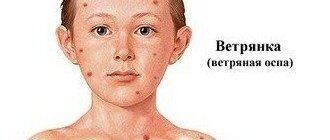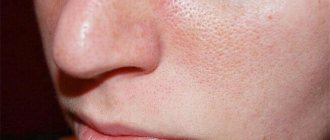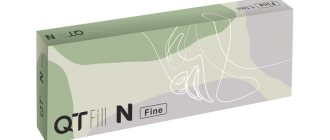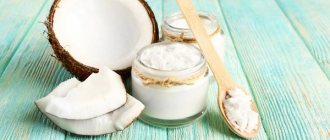Composition of the product
According to the manufacturers, coral peeling from Christina includes 4 main components:
- Crushed corals come from the Red Sea, conventionally divided into two “age” types. The purpose of young corals is to stimulate the skin, while older corals are crushed into micro-needles that cleanse and activate blood circulation, penetrating deep into the layers of the epidermis.
- Dead Sea salts soften layers of dead cells and improve their exfoliation.
- Algae extracts reduce the production of sebum (sebum) and act as an antibacterial agent.
- Medicinal herbs from Brazil and the Amazonian lowlands nourish, smooth out wrinkles, and accelerate regeneration processes.
- Vitamins A, C, E tone.
Peeling “Christina” is produced in two formats:
- Light peeling for light exfoliation. Its composition contains a larger proportion of plant components, and a smaller amount contains coral powder. It is intended for shallow peeling and is used in salons under the banner of “entrance day procedure.”
- Deep peeling is a composition for deep penetration, it contains a higher proportion of corals. It is considered a classic peeling with the effect of chemical exfoliation and microdermabrasion. There are a lot of reviews about Deep peeling with complaints about the painfulness of the procedure.
Although Rose de Mer peeling can now be purchased in online stores, it is not recommended to use it at home on your own due to pain and possible allergic reactions.
Possible complications
During coral peeling, the skin heats up and turns red, and the patient may experience quite strong painful sensations: from mild tingling to severe stinging. The degree of discomfort depends on the sensitivity of the skin and the depth of exposure, and unpleasant feelings when touched can last for several hours after peeling.
There are usually no complications after the Rose de Mer procedure. The changes that occur to the skin in the first 4-5 days pass, and the patient receives rejuvenated, refreshed skin. Complications that may still arise are common to all types of peeling: allergies, hyperemia, swelling, pain, increased skin sensitivity, infection. See more details here.
Expected effect
Cosmetologists recommend coral peeling as a completely natural remedy to combat the following problems:
- Acne and acne.
- Post-acne, shallow scars, stretch marks.
- Skin damage caused by sun exposure: keratosis, dryness, microwrinkles.
After peeling, the skin changes for the better:
- Fresh complexion, getting rid of dull skin.
- Leveling the skin texture.
- Normalization of sebum secretion.
- Narrowing of the pores.
- Increased skin tone and elasticity.
Pre-peeling preparation
Some cosmetologists recommend doing ultrasonic or mechanical facial cleansing a few days before coral peeling to cleanse clogged pores. But many doctors working with Rose de Mer professional cosmetics use a special antiseptic soap immediately before the peeling session.
To do this, apply a small amount of liquid disinfectant soap to the face and massage it over the entire surface. An important function of this process is precisely preparing the skin for better exfoliation and protecting it from microdamage. Then the soap is washed off and the doctor begins to prepare the peeling composition and apply it to the treated area.
Peeling in the salon
Peeling "Christina", according to the manufacturer, is suitable for owners of any skin type, but it also has contraindications.
Contraindications for use
Contraindications to peelings include:
- Damage: scratches, wounds.
- Infectious diseases and inflammatory processes, fever.
- Taking vitamin A and its derivatives.
- Herpes is in the acute stage.
- Pregnancy and lactation.
- Allergy to components in the peeling mixture.
Please note: there are no contraindications for use on skin with age spots; moreover, peeling is recommended for removing areas of pigmentation.
Skin preparation
Those who decide to trust professionals and have exfoliation done in a salon must first prepare for the procedure.
Preparing for peeling is not very difficult:
- Two weeks before the procedure, you should not sunbathe, whether naturally or in a solarium.
- Cosmetologists often advise facial cleansing, usually combining mechanical and ultrasonic treatment. But if the skin is in good condition, then the specialist can simply treat the face with a special antiseptic soap from the “Rose de Mer” “Christina” line immediately before peeling. The use of such soap is more desirable: the substances included in its composition soften dead skin cells, and the peeling effect will ultimately be better.
- Those who have had traces of herpes on their lips in the past need to take a course of antiviral drugs.
- If you have acne or inflammation, do not press on it or injure the skin, otherwise the peeling process will be more painful.
Peeling process
One peeling session may not be enough to achieve a dramatic effect, especially when it comes to removing stagnant spots, scars and post-acne. For oily skin, 4-6 procedures may be required, for normal skin - 2 sessions with an interval of 3 months. For those with dry skin, it is best to repeat peeling no more than once every six months.
You can come to the salon with or without makeup: in any case, the cosmetologist will wash off all the makeup from your face.
The step-by-step peeling procedure is as follows:
- All cosmetics and impurities are washed off. Even if you come to the salon without makeup, the cosmetologist is obliged to clean your face of possible dust, sweat, and sebum. Treatment of the skin with a special softening soap is included in this stage.
- The cosmetologist prepares a mixture in a ratio of 1 to 2 from coral chips and an activator consisting of an extract of medicinal herbs, algae, sea salt and minerals. The finished mixture is applied to cleansed facial skin.
- The mixture is rubbed into the facial skin with massaging movements. Important: if you have discussed light peeling with your cosmetologist, the massage time should not exceed 1–2 minutes. For medium peeling, the duration of rubbing should not exceed 10 minutes. If the cosmetologist acts on the skin for more than 10 minutes, he performs the peeling incorrectly. But keep in mind that this stage is very painful, due to which the perception of time may be distorted. It is better if there is a clock in front of you. Here's what women say about the scrubbing procedure:
- The next step is a wet compress. This is usually a simple damp, cool towel that is left on the face for 10-15 minutes and provides some relief.
- After a wet compress, the peeling mixture is washed off. The sensations may be painful, but not as intense as when rubbing the mixture.
Further variations are possible: the cosmetologist can apply a soothing mask or immediately a gel to consolidate the result. After the procedure, the doctor must apply a thick sunscreen to the skin in the treated area.
It was a nightmare! It feels like broken glass is being rubbed on your burned skin.
Katerina, 31 years old.
While rubbing it in it was very painful, although I have a high pain threshold. I could barely stand it. The most painful place is the cheeks under the eyes.
Alexandra, 36 years old.
This is an enhanced facial massage with glass wool.
Marina, 28 years old.
It felt like I was being driven across the asphalt with my face.
Tatyana, 29 years old.
Have you ever fallen face first into the sand? Compared to coral peeling, these are gentle strokes.
Angelina, 29 years old.
About the manufacturer
The Christina brand was created in 1982 in Israel by cosmetologist Christina Miriam Zehavi. The main activity of the company was the production of products for salon and home care.
Initially, the main goal of the company was to increase the effectiveness of existing cosmetic products. That is why they were the first to use hyaluronic acid and developed a line of professional products based on it. Next, retinol was studied and applied. This happened in 1995. Very soon the products conquered the cosmetology market of many countries around the world, and Russia was no exception.
Today, Christina cosmetics occupy a special niche in 60 countries. High-tech production produces more than 20 thousand different products every day. The catalog contains almost 300 items, most of which contain active components of the Dead Sea.
Post-procedure care
After peeling, the skin becomes red, sometimes with a hint of brown. Clients of beauty salons note that their faces still hurt for several days.
A cosmetologist may suggest purchasing a special set for post-peeling care. The cost of such a kit is usually twice the cost of the procedure itself , and not everyone can afford it. The recovery process after coral peeling “Rose de Mer” takes 5 days, in rare cases – up to 7 days:
- During the first 24 hours, you should not touch your face. And as many admit, I don’t really want to, because any touch causes pain due to the coral “needles” remaining in the upper layer of the skin.
- First day after peeling. You can wash your face with warm water and apply the drying serum from the post-peeling kit. If you refuse to purchase this expensive kit, prepare an acetic acid solution for yourself: dissolve 1 tablespoon of 9% vinegar essence in a glass of clean, cool water. You need to wash your face using serum or solution 2 times a day until the peeling process begins. The pain usually goes away by the end of the first day.
- The second day, as a rule, passes in feelings of tightness of the skin. In rare cases, cracking and slight peeling of the skin begins.
- On the third day, most people begin to actively peel. You cannot tear off the scales; the largest pieces of skin can be carefully cut off with nail scissors.
- During the fourth and fifth days, skin exfoliation continues. During this period, it is recommended to wash your face with warm water and use non-greasy creams in a package with a dispenser - this guarantees the sterility of the product. On the same days, you can visit the cosmetologist again, who will apply a special product to your face and gently remove cells from the dead layer of skin. If this is not possible, use a home recipe: apply Vaseline to a thoroughly washed face and let it absorb for one to two minutes. Then do a light massage: the dead skin will roll off under the influence of your hands. After the massage, wash your face again using antibacterial products.
Duration depends on individual skin characteristics.
For all patients who have undergone the procedure, there are general recommendations:
- For 14 days, do not expose your skin to ultraviolet radiation: do not sunbathe in a solarium or on the beach, use sunscreen when going outside.
- During the week, which usually coincides with the recovery period, do not injure the skin in environments with high temperatures: baths, saunas.
- Do not visit the pool for a week.
- During the recovery period, do not pick off the peeling skin as this will cause scars. It is strictly forbidden to use any scrubs or gommages at this time. Do not scratch your skin under any circumstances.
Pros and cons of Rose de Mer
Unlike exfoliation using fruit acids, the Rose de Mer method is a medium peeling. The procedure is a worthy alternative to more traumatic treatments such as deep chemical peels. Coral peeling is recommended if you are intolerant to chemical peeling or have contraindications to other methods of cleansing or dermabrasion, thanks to its herbal anti-allergenic composition.
The advantage of coral peeling is gentle mechanical cleansing of the skin with a simultaneous stimulating, softening, antibacterial effect, which allows it to be used even on sensitive skin. But coral cleansing is also not completely atraumatic, because it actively affects the surface and middle layers of the skin.
A distinctive feature of Rose de Mer from other types of peeling is the ability to control the depth of penetration of the active substance, which allows for superficial or deep cleaning, depending on the indications and wishes of the patient.
Many types of peeling are contraindicated for persons with manifestations of rosacea and other vascular changes. Peeling with coral chips is allowed for such cosmetic defects.
Positive biostimulation, cells do not die immediately as with chemical peels, but within 2 days, sending a signal to the basement membrane. Consequently, the cell renewal mechanism is launched.
The result and depth of impact does not depend on, as with chemical peels, but depends on the time of rubbing in the peeling composition.
After the procedure, the texture and complexion of the face noticeably improve, but Rose de Mer still cannot cope with deep wrinkles.
During the procedure, painful sensations arise, sometimes very strong.
Several procedures are required to achieve a visible effect.
Peeling Rose de Mer - before and after photos
Efficiency of application
Coarse particles of coral and salt have good grinding abilities. The procedure allows you to cleanse the surface of the skin by removing the upper stratum corneum. This leads to a leveling of the relief: a decrease in the depth and severity of wrinkles, scars, and bumps. The number of interventions to achieve an effect depends on the severity of the problem.
The exfoliating effect of the scrub is similar to a massage. After the procedure, impaired blood circulation and lymph flow are restored. Proper muscle function is stimulated, metabolic processes return to normal. The skin looks fresh, tightened, healthy. The effect is noticeable after a single session. A neglected situation will require a course of intervention.
Coral peeling allows you to lighten age spots and freckles. After a single treatment, dark areas become less noticeable. A course of interventions (3-4 sessions) will help to completely get rid of the uneven shade. This is only possible in combination with regular sun protection: you will need to use a cream with UV protection.
The procedure helps to narrow enlarged pores and normalize the activity of the sebaceous glands, which has a positive effect on the quality of the skin. The integument becomes attractive in appearance: more even, matte. The predisposition to frequent rashes disappears (if the destructive process is not related to health). Acne and comedones are cleared in 1-2 sessions; acne treatment requires a course of interventions.
Price
The product is available in two versions. For about 1000 rubles you can buy a piece weighing 50 g. The peeling costs, of course, not a penny. But it is enough to conduct several courses. If you do the procedures at home, this will significantly save the family budget. After all, in beauty salons the procedure will cost much more. It all depends on the status of the institution, the qualifications of the master and the region of the country.
Mini versions are also available for sale. For about 500 rubles you can buy a soap peel weighing 30 g.
Precautionary measures
Ros de Mer products contain active drying components that tighten pores and reduce the production of sebaceous glands. Common consequences of cleansing are: lack of hydration, dryness and a feeling of tightness. Use according to indications and under the supervision of a specialist will avoid negative manifestations. The specialist always conducts an allergy test to exclude possible complications.








